Germany's medium tanks in the interwar period
The basis for the creation of a multi-turreted tank was based on the concept of a tank with powerful cannon-machine-gun armament, spread across several towers, providing independent all-round firing of various types weapons. The tank had to have sufficient mobility and fight tanks, enemy fortifications, artillery and infantry.
Neubaufahrzeug Medium Tank (Nb.Fz.)
Order for the development of the tank Nb.Fz. was placed in the companies Krupp and Rheinmetall. Each company offered its own project, and the first samples of tanks were produced, which were not fundamentally different. According to the results of their tests, it was decided to manufacture the hulls of tanks company Rheinmetall. Krupp towers. In 1935, the first three tank models were made, and within two years the tanks were successfully tested.
The tank was a three-turreted classic layout with gun and machine gun weapons and anti-bullet armor. The weight of the tank reached 23,4 tons, the crew of the 7 man (commander, driver, gunner, loader, two arrows in the machine-gun turrets and radio operator).
In front of the case there was a department of management where the driver was located on the left. The fighting compartment was located in the middle of the hull and covered the main turret and two slightly modified machine-gun turrets from the Panzer I light tank, one in the nose in front of the main turret and the other in the back. In the stern was located the engine compartment.
Two twin guns were installed in the turret: the 75mm gun KwK L / 24 and the 37mm gun Tankkanone L / 45. In the samples of the company Rheinmetall they were installed one above the other, in the samples of the company Krupp were installed in a row. As an additional weapon, three 7,92mm MG13 machine guns were used. One at a time in two machine-gun turrets and one in a ball mount tower.
The tank hull was a riveted-welded structure of complex configuration, the upper and lower frontal armor plates of the hull had significant tilt angles. The upper frontal armor plate was thick 15mm and the lower 20mm, and the armor plates of the sides, stern, bottom and roof of the 13mm.
As a power plant, the Maybach HL 108 TR engine with an 280 hp power was used, providing 30 km / h speed and 120km cruising range.
The chassis of the tank in relation to one side was made of ten double rubber coated support rollers of small diameter, interlocked in pairs in five trucks. Carts were hinged to the body by means of balancers. The role of elastic elements performed coil springs. To eliminate the sagging of the track, four supporting rollers were installed, the drive wheel was located behind, and the guide was in front.
Tank Nb.Fz. not mass-produced and practically did not participate in battles, its characteristics did not satisfy the military, but it became a very successful "weapon of German propaganda." By the beginning of World War II, he was one of the most odious German tanks, he constantly participated in exercises and parades, his photographs were regularly published by all famous newspapers of that time. Three tanks Nb.Fz. in 1940, they were sent to Norway, where they were constantly shown to everyone and propaganda made it appear that Germany has a lot of heavy tanks in Norway.
Tank Nb.Fz. in terms of its layout, it was close to the multi-turreted tanks of that time - the English Vickers "Independent", the Soviet T-35 and the French Char-2C, which also turned out to be too complex and cumbersome and did not have the characteristics required in the upcoming war.
In the middle of the 30's, the Wehrmacht leadership revised their views on the role of tanks in the upcoming war and began to proceed from the "blitzkrieg" strategy, according to which the army needed completely different maneuverable tanks, with greater importance attached to the tank's mobility than its firepower and security Based on this strategy, the multi-tower Neubaufahrzeug type tanks did not fit into the battle formations, the Wehrmacht were not needed and the work on these tanks was stopped. The focus was on the creation of medium tanks Pz.Kpfw.III and Panzer IV (and the last) was the main tank of the Wehrmacht.
Medium Tank Pz.Kpfw.III
In parallel with the development of a light tank Pz.Kpfw.II, armed with an 20-mm cannon, insufficient to effectively combat the enemy’s fortified defense and artillery, taking into account the experience gained in creating the Nb.Fz. tank. 1934 began the development of a more powerful medium tank, Pz.Kpfw.III, armed with an 37-mm cannon.
The tank had an arrangement with the location of the engine compartment in the aft, transmission compartment in the frontal, and the control compartment and the combat compartment in the middle part of the tank. The tank, depending on the modification, had a weight of 15,4 — 19,8 tons. The tank crew consisted of five people: a driver, a gunner-radio operator, who were in the command and control unit, a commander, a gunner and a loader, located in a triple tower.
The hull of the tank was welded from rolled armor plates, separate parts of the hull were connected with bolts. In the front upper part of the hull sides, glass blocks were installed for observation, which were closed with armored gates. In the front hull sheet on the left, there was a viewing device of the driver, which included a glass block closed by an armored valve and a binocular periscope observation device.
The tower was welded hex, located symmetrically relative to the longitudinal axis of the tank. A gun, two machine guns and a telescopic sight were mounted in the mask's front sheet. On the right and left for observation, glass blocks were installed, closed with armored valves. For landing crew members in the sides of the tower were hatches. At the rear of the tower was installed commander's turret with a hatch.
Reservation of the tank on the first samples was insufficient. On modifications A, B, C, D the thickness of the armor of the forehead and sides of the hull and turret was 15 mm, the roofs 10 mm and the bottoms 5 mm. On versions T, F, the thickness of the armor of the forehead and sides of the hull and turret was 30 mm, the roofs of 12-17 mm and the bottoms of 16 mm.
The armament of the tank consisted of 37-mm cannon KwK L / 45 company Rheinmetall-Borsig and paired with her two 7,92-mm machine gun MG 34 company Rheinmetall-Borsig. The third MG 34 machine gun was installed in the front hull plate.
The Maybach HL 108TR engine with 250 hp power was used as the power plant. or Maybach HL 120TR with 300 horsepower, providing 35 (70) km / h speed and 165 km cruising range. Chassis of the tank in the process of modernization has changed significantly.
From 1938 to 1940, several modifications of this tank A, B, C, D, E, F were developed and released. The Pz.Kpfw.III Ausf.A version was distinguished by its undercarriage with five large-diameter support rollers with individual suspension on vertical springs and two supporting rollers on each side. The weight of the tank was 15,4 tons, the speed was lower than the requirements of the customer and was only 35 km / h.
The modification of the Pz.Kpfw.III Ausf.V differed in the chassis, which had small diameter diameter rollers on each 8 board, which were locked in pairs in trolleys suspended on two groups of leaf springs and equipped with hydraulic shock absorbers. A number of minor changes were also made to the design of the tank.
The modification of the Pz.Kpfw.III Ausf.C differed by a modified suspension, the 8 of the rollers on each side were arranged in three trolleys - the extreme two rollers and the middle of the four rollers suspended on leaf springs, the extreme trolleys were on shock absorbers. In addition, power plant assemblies were improved, first of all, the turning mechanism and final drives.
Modification Pz.Kpfw.III Ausf. D was distinguished by the modified aft of the hull and the commander's turret of a new design, as well as changes in the power plant.
The modification of the Pz.Kpfw.III Ausf.E was distinguished by a new undercarriage, which included six dual rubberized road wheels on board and a torsion bar suspension. In the suspensions of the first and sixth road wheels, shock absorbers were installed. A new Maybach HL 120TR engine with a capacity of 300 L was installed on the tank. with. and a ten-speed gearbox, as well as a course machine gun in ball mounting. In the lower side hull sheets, evacuation hatches appeared between the upper branch of the tracks and supporting rollers.
Modification Pz.Kpfw.III Ausf. F had the protection of the tower epaulet from bullets and shrapnels, additional outdoor lighting devices and a new commander's turret. A batch of their 10 tanks was armed with a new 50mm KwK 38 L / 42 cannon, and the frontal part of the turret was redesigned and one coaxial machine gun was installed instead of two.
Modifications of the Pz.Kpfw.III series of the G, H, J, L, M series were developed and produced during the Second World War.
From the middle of 1941 to the beginning of 1943, the Pz.Kpfw.III was the basis of the Wehrmacht armored forces and, despite the fact that it was inferior to the tanks of the anti-Hitler coalition countries modern to it, made a significant contribution to the Wehrmacht’s successes of that period.
In terms of their mobility, security and ease of operation of the crew Pz.Kpfw. III was on a level in its weight class (16-24 tons). In general, the Pz.Kpfw.III was a reliable, easy-to-operate machine with a high level of comfort for the crew, but in the accepted concept of the tank it was not possible to install a more powerful gun and as a result, Pz.Kpfw.III lost to the more perfect Pz.Kpfw.IV.
Medium Tank Pz.Kpfw.IV
The tank Pz.Kpfw.IV was developed in addition to the tank Pz.Kpfw.III, as a tank of fire support with an anti-tank gun, capable of hitting anti-tank defenses beyond the reach of other tanks. In 1934, the military issued requirements for the creation of such a machine with a weight not exceeding 24 tons, and in 1936, tank prototypes were made.
The tank Pz.Kpfw.IV had a layout that became “classic” for all German tanks with a turret box and a transmission placed in front and a drive wheel. Behind the transmission there was a control compartment, in the middle part a fighting compartment and in the aft motor. The crew of the tank consisted of five people: a driver and a gunner-radio operator, located in the command and control unit, and a gunner, loader and tank commander who were in the triple turret. The weight of the tank, depending on the modification of the A, B, C series produced before World War II, was 18,4 - 19 tons.
The hull of the tank was welded and did not differ rational armor slope. A large number of hatches facilitated the landing of the crew and access to different mechanisms, but at the same time reduced the strength of the hull. The driver and radio operator had surveillance devices providing them with satisfactory visibility.
On the modification of tanks Pz.Kpfw.IV Ausf.A armor resistance was low. The thickness of the armor of the forehead and sides of the hull and turret was 15mm, the roofs of 10-12 mm, the bottoms of 5mm. On modifications Pz.Kpfw.IV Ausf.V and Ausf.C the thickness of the armor of the hull and tower forehead was increased to 30mm, and the sides to 20mm. Additional protection provided protivokumulyativnye screens installed on the sides of the tank.
The tower was a multi-faceted form and made it possible to upgrade the tank armament. On the roof of the tower behind the commander's turret was installed with five viewing devices with armored valves. There were also viewing slots in the side hatches of the turret and on both sides of the gun mask. Hatches along the sides of the tower improved the habitability of the crew, but reduced the armor resistance. The tower could be rotated manually and with the help of an electric drive. The place of the commander was directly under the commander's turret, the gunner was located to the left of the breech of the gun, the loader - to the right. The tank was provided with good conditions of habitability and visibility for the crew of the tank, there were perfect at that time observation and aiming devices.
As the main armament on all modifications of the tank, a short-barreled 75mm KwK.37 L / 24 gun was installed, as additional weapons on the Ausf.A series there were two 7,92mm MG-34 machineguns, one paired with a gun, the other coursework in the body. On modifications Ausf. In and Ausf. With only one coaxial machine gun.
The engine was housed in the engine compartment longitudinally, offset to starboard. On modifications Ausf.A installed engine Maybach HL 108TR 250 power l. s., providing speed 31 km hour and power reserve 150 km. On the modifications Ausf.V and Ausf.C was the engine Maybach HL 120TR with power 300 l. s., providing speed 40 km hour and power reserve 200 km.
The chassis Pz.Kpfw.IV in relation to one side consisted of eight dual rubberized rollers, four dual supporting rollers, a front drive wheel and a sloth. The track rollers were interlocked in pairs on balancers with suspension on elliptical leaf springs.
Modifications of the Pz.Kpfw.IV series of the D, E, F, G, H, J series were developed and produced during the Second World War.
Pz.Kpfw.IV was created as an infantry support tank and an effective anti-tank weapon, turned out to be a long-lived and survived not only other pre-war development tanks, but also a whole series of tanks developed and mass-produced during World War II. It turned out to be the most massive tank of the Wehrmacht, with only 1937 to 1945 in the year, 8686 of these tanks of various modifications was released.
It should be noted that the Pz.Kpfw.IV was developed in the framework of the concept of "blitzkrieg" and the focus was on its mobility, while the firepower and security were not sufficient at the time of the creation of the tank. A short-barreled cannon with a low initial speed of an armor-piercing projectile did not provide an effective fight against potential enemy tanks, and the weak thickness of frontal armor, only 15 (30) mm, made the Pz.Kpfw.IV easy prey for anti-tank artillery and enemy tanks.
During the fighting, experience was gained to improve the tank, on modifications of the war years a long-barreled 75-mm gun with a barrel length 48 caliber was installed and the tank's protection was greatly improved, frontal armor reached 80 mm, but the mobility characteristics significantly deteriorated. As a result, by the end of the war, the Pz.Kpfw.IV was seriously inferior in its characteristics to the main middle tanks of the anti-Hitler coalition countries.
To be continued ...
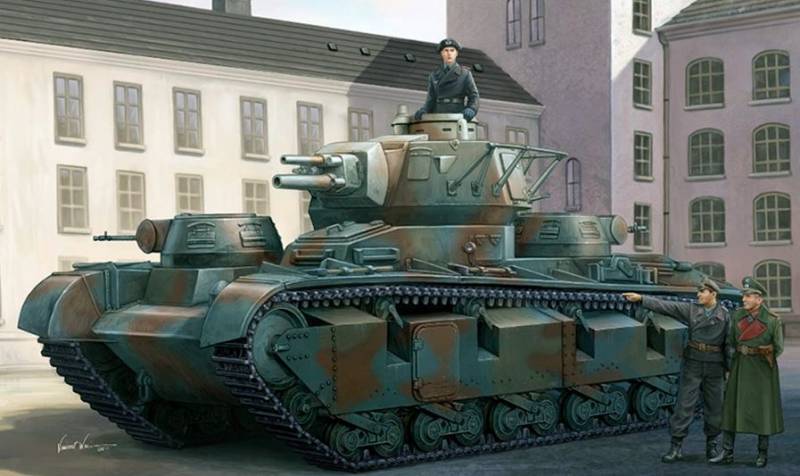
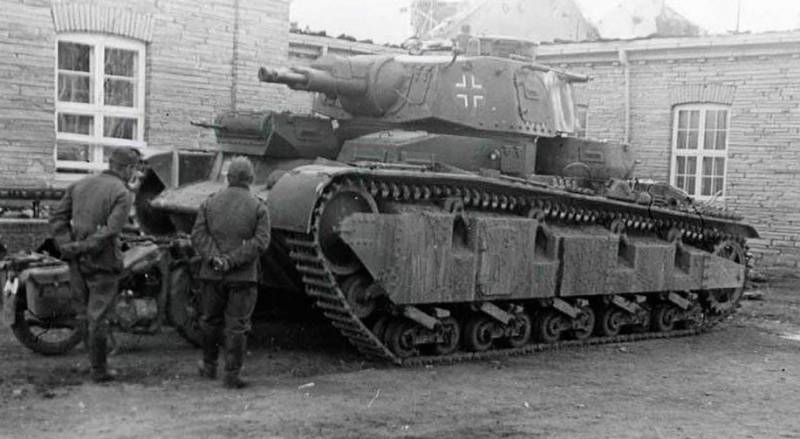
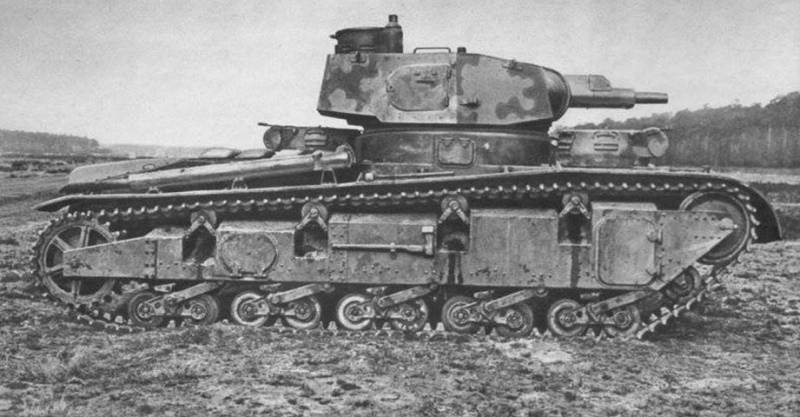
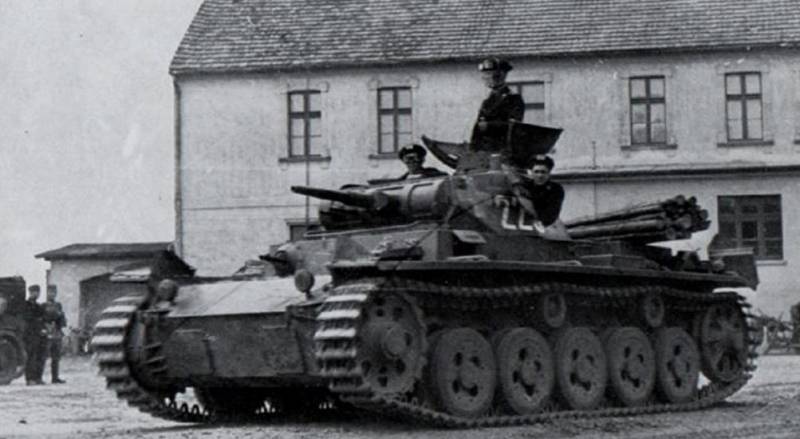
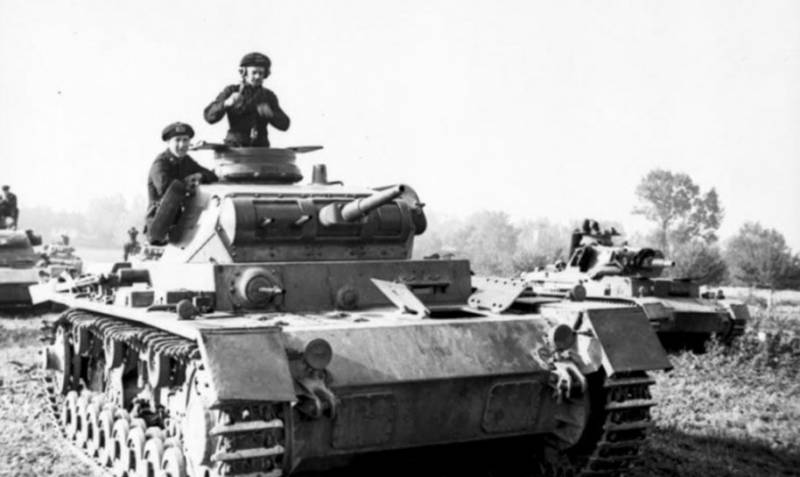
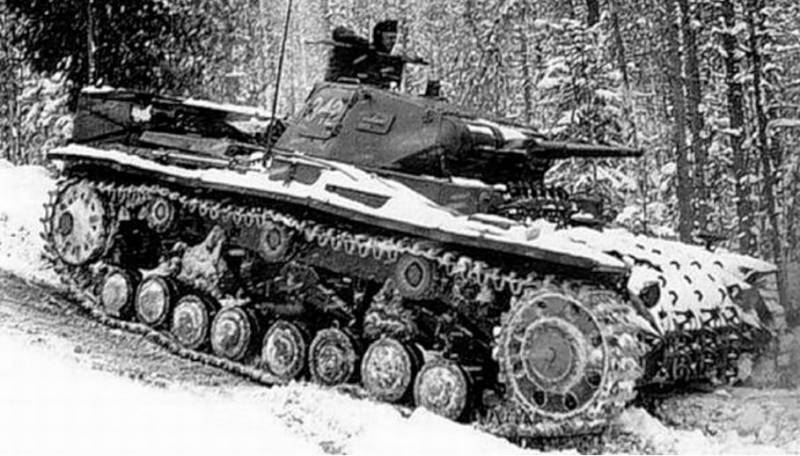
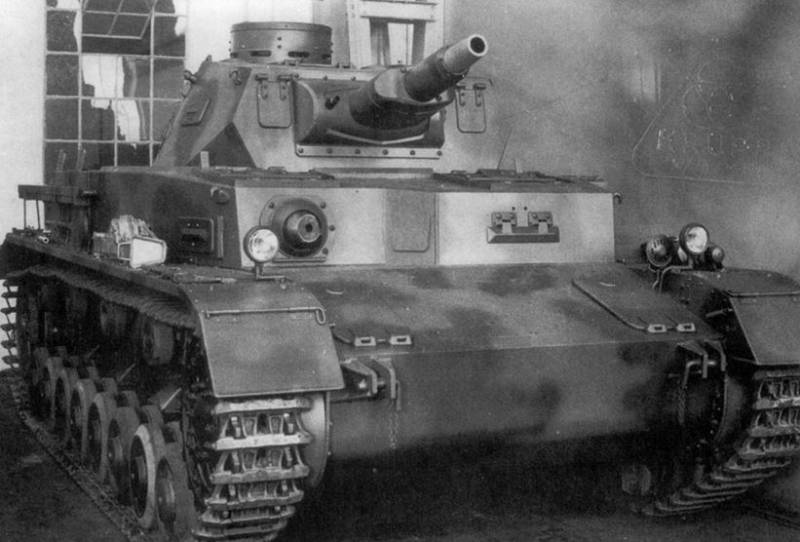
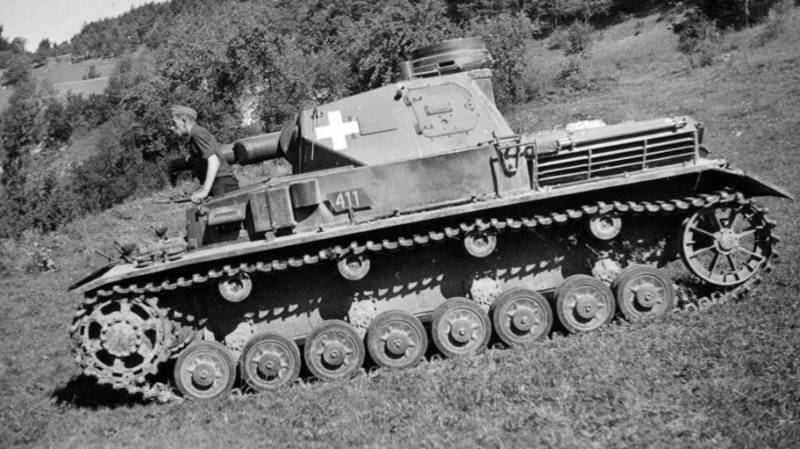
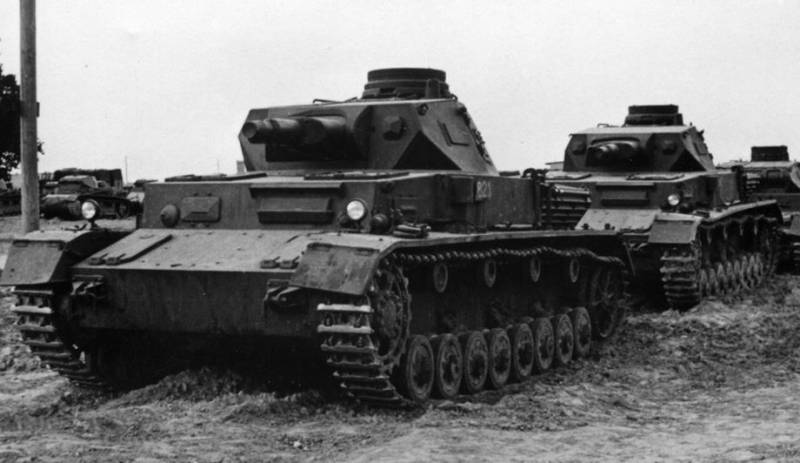
Information